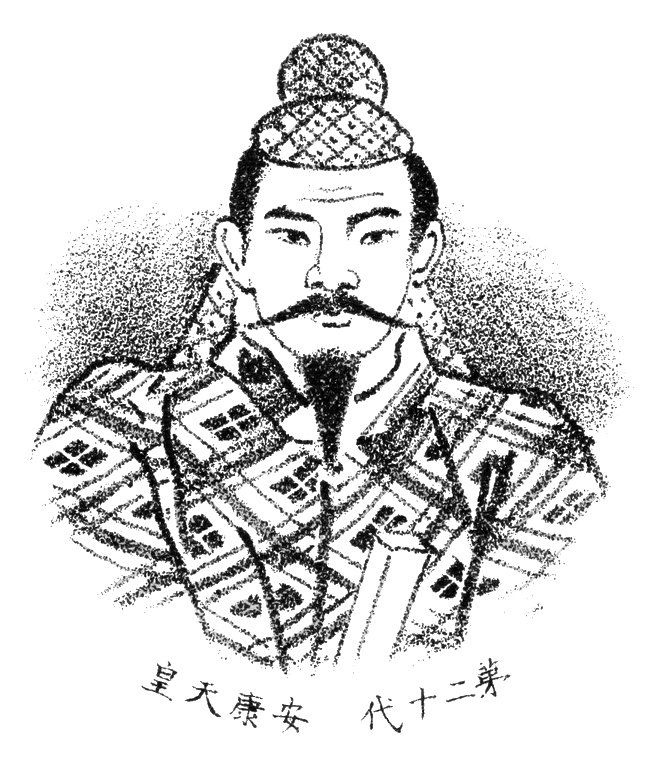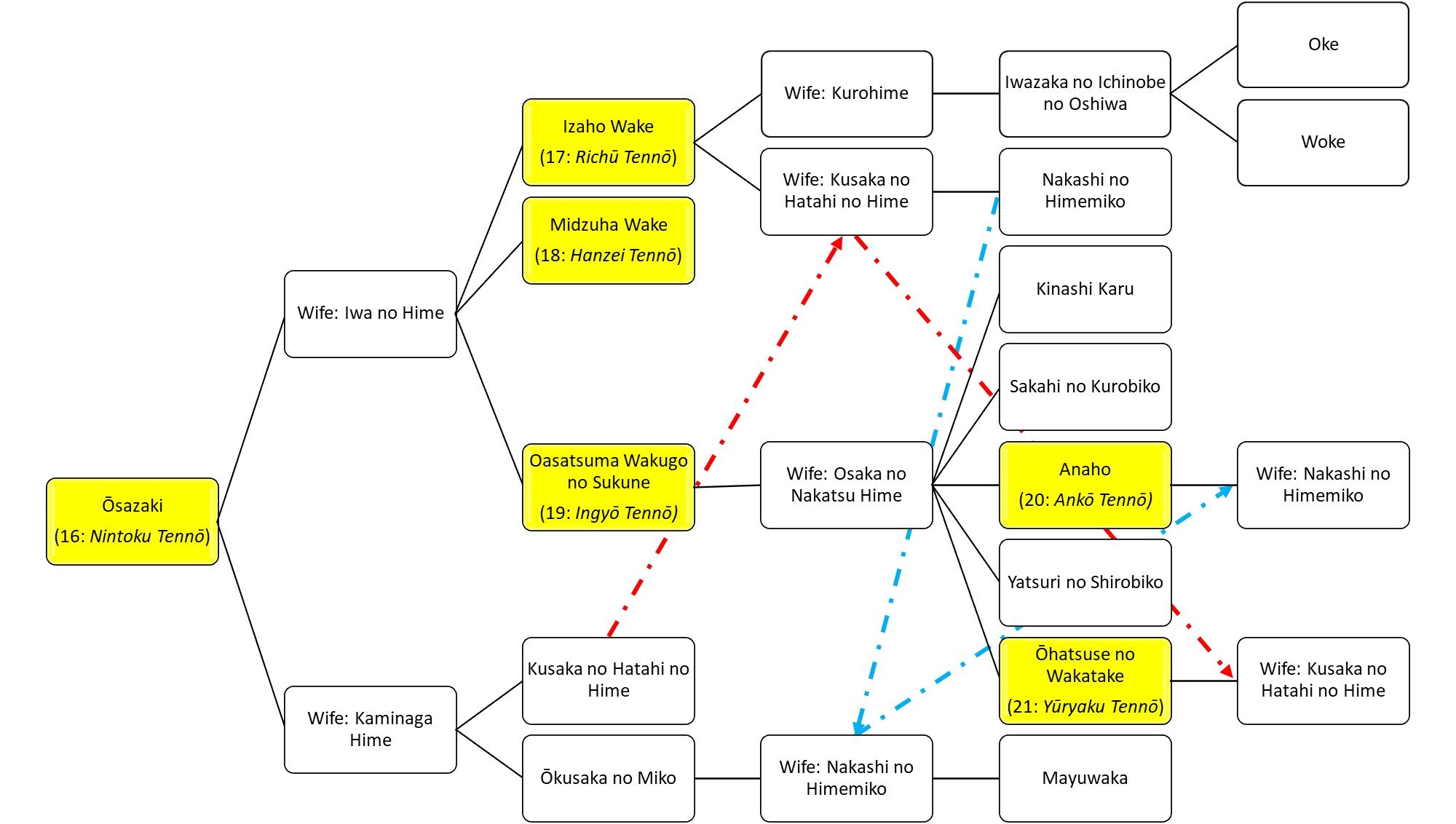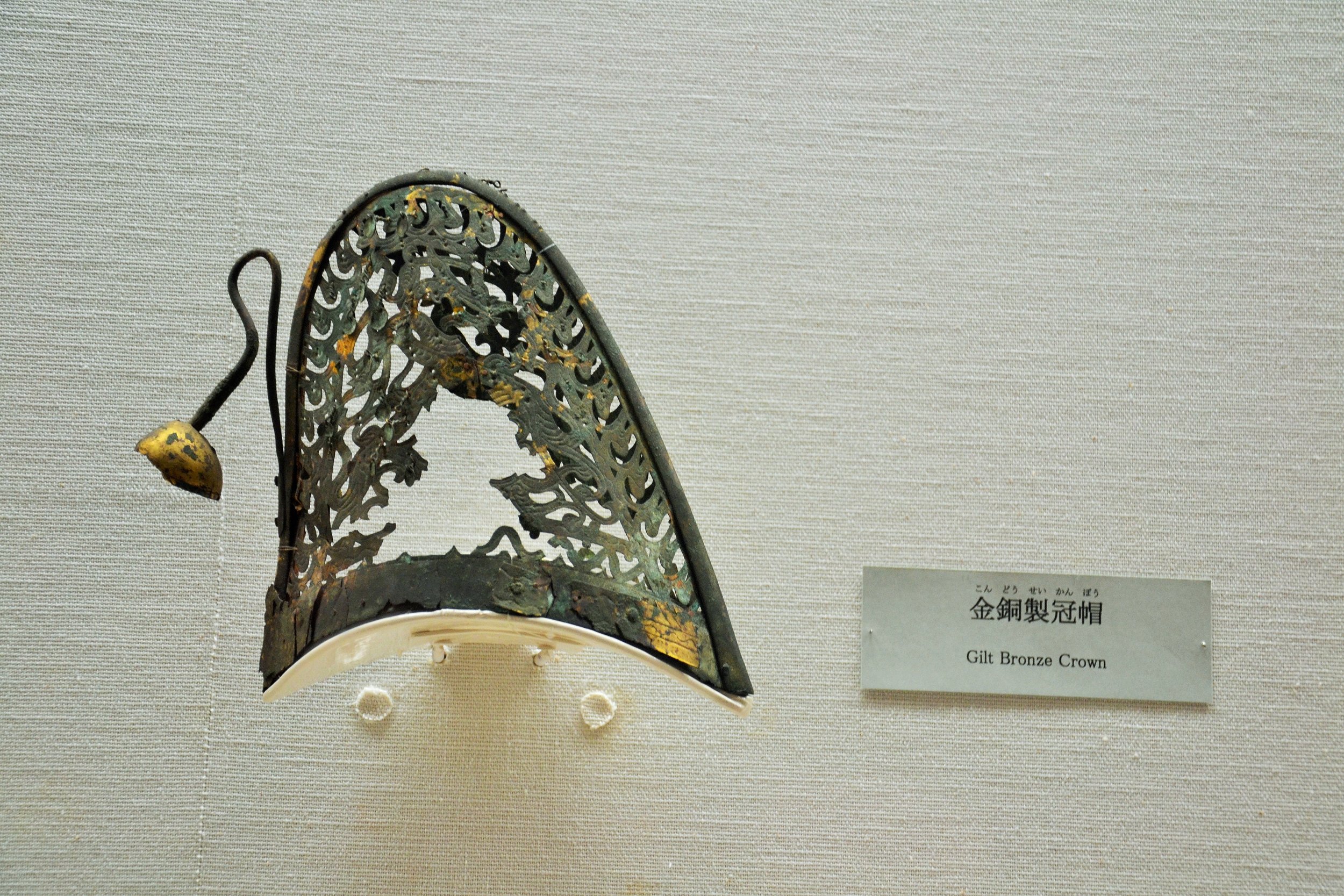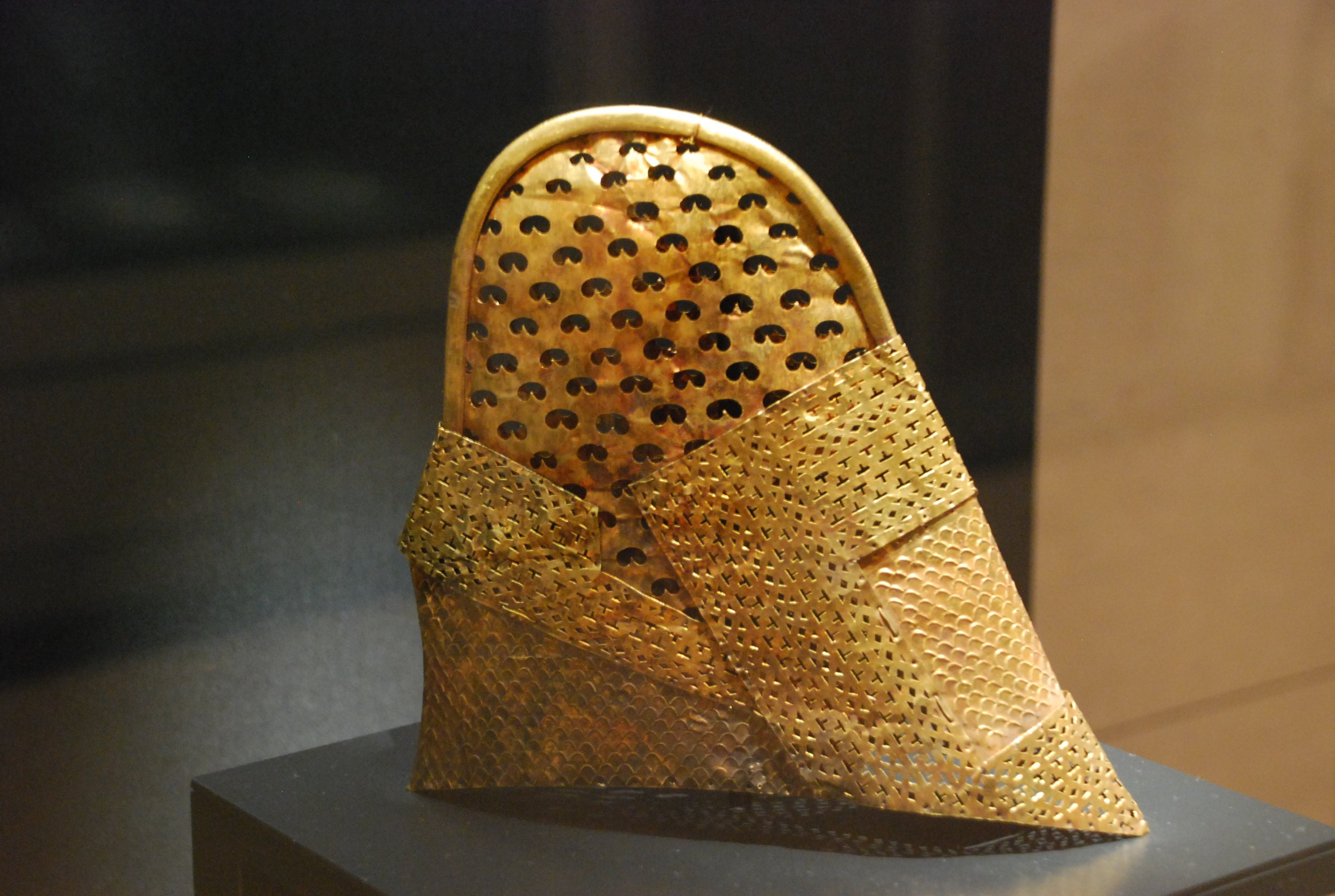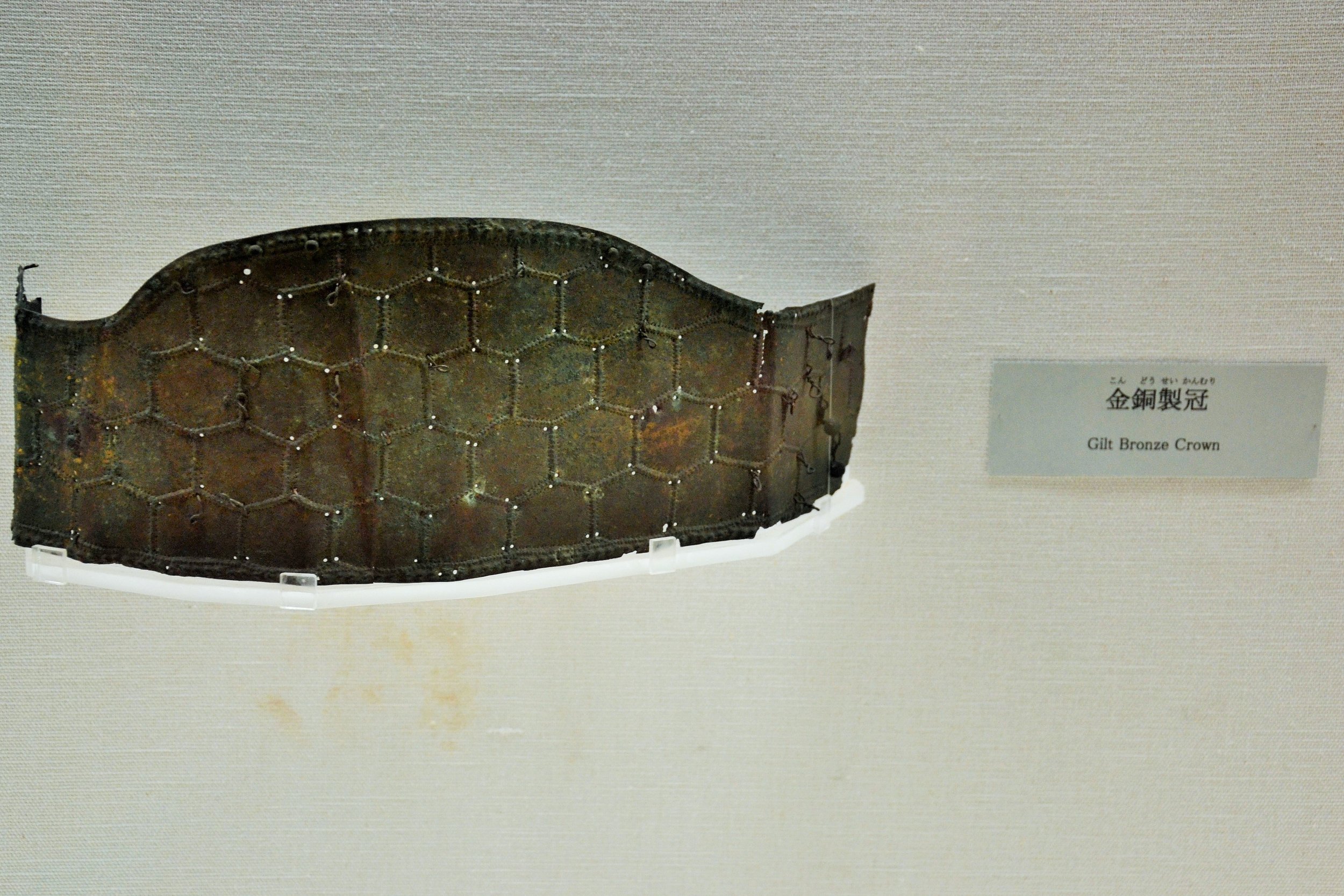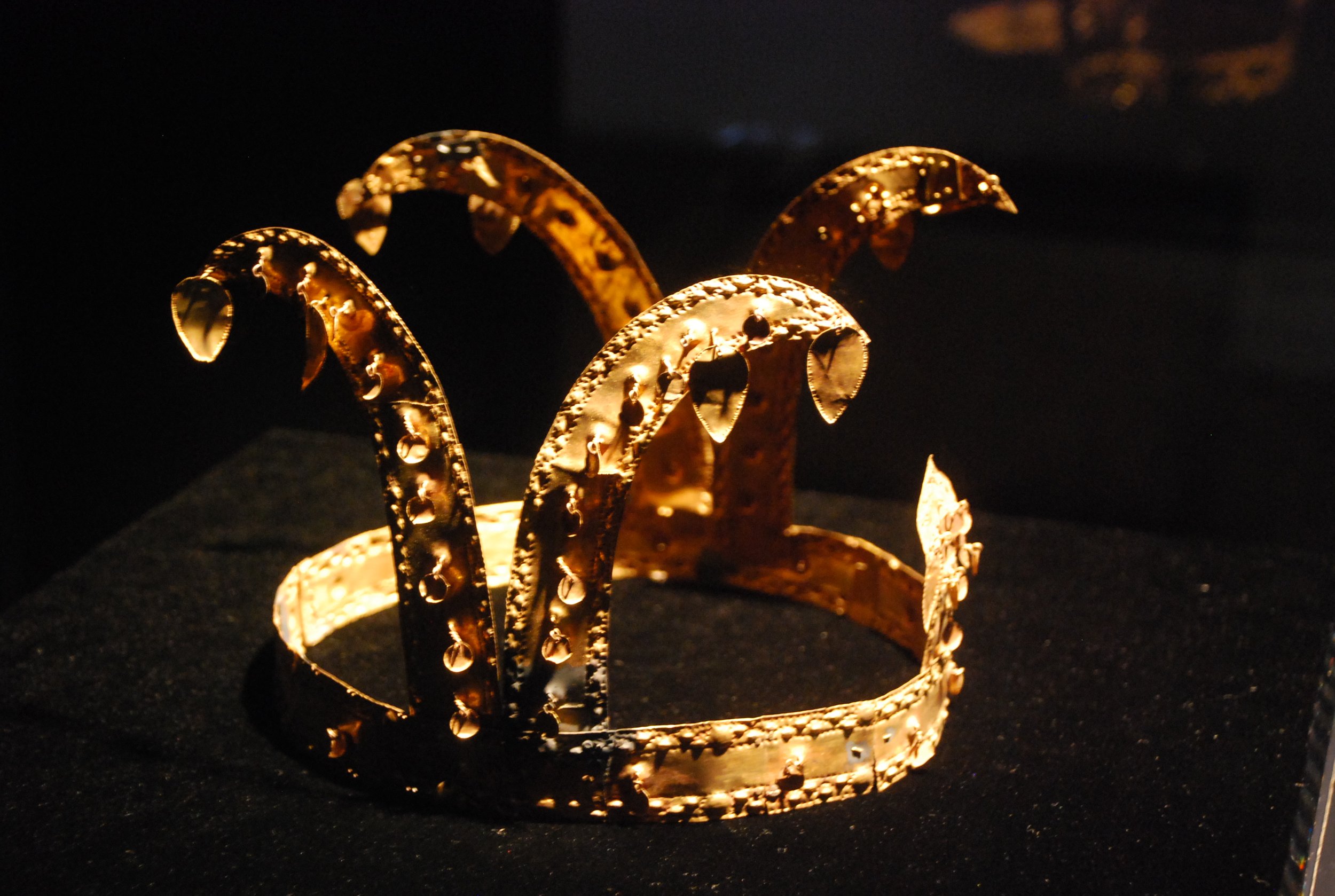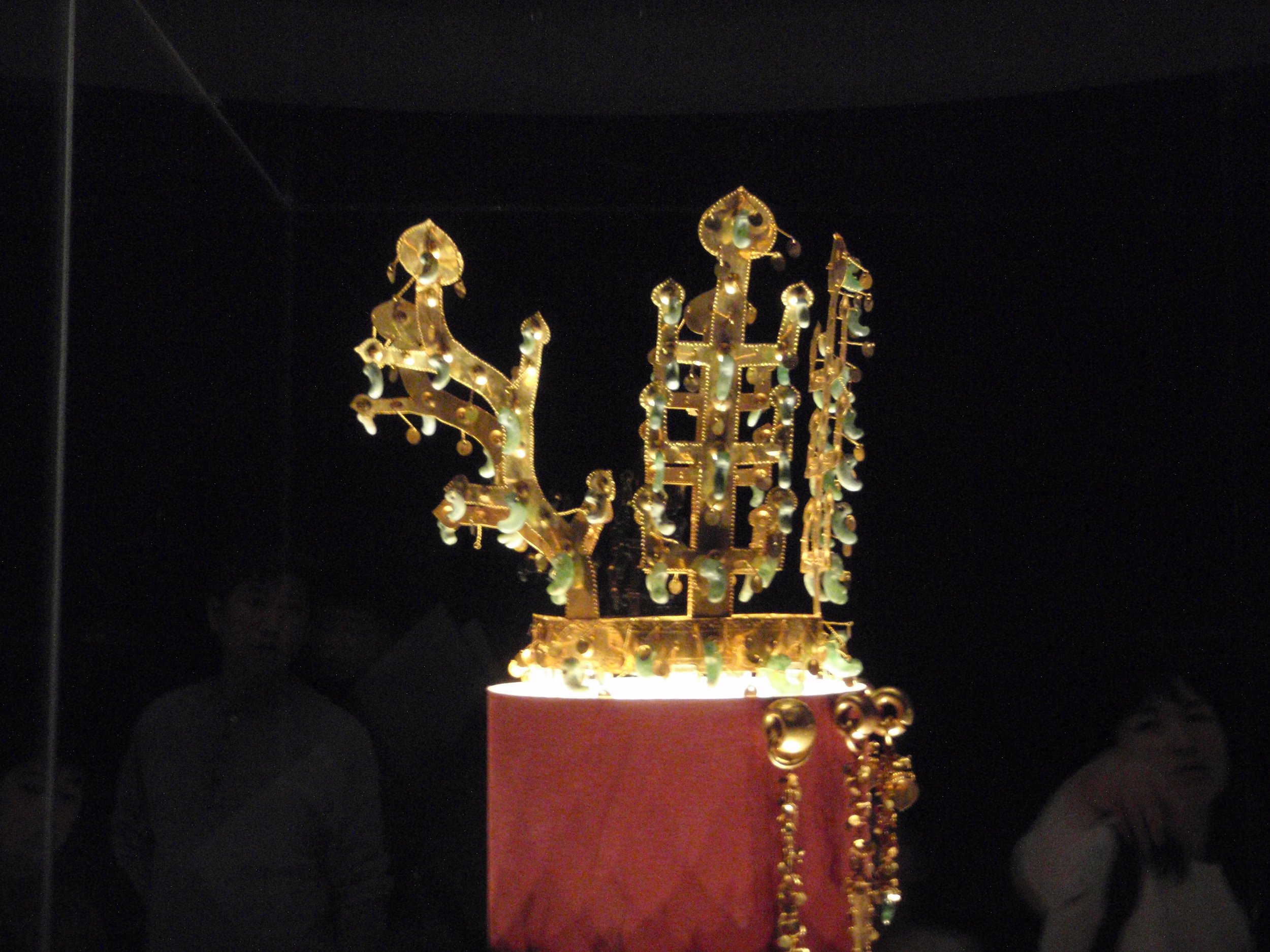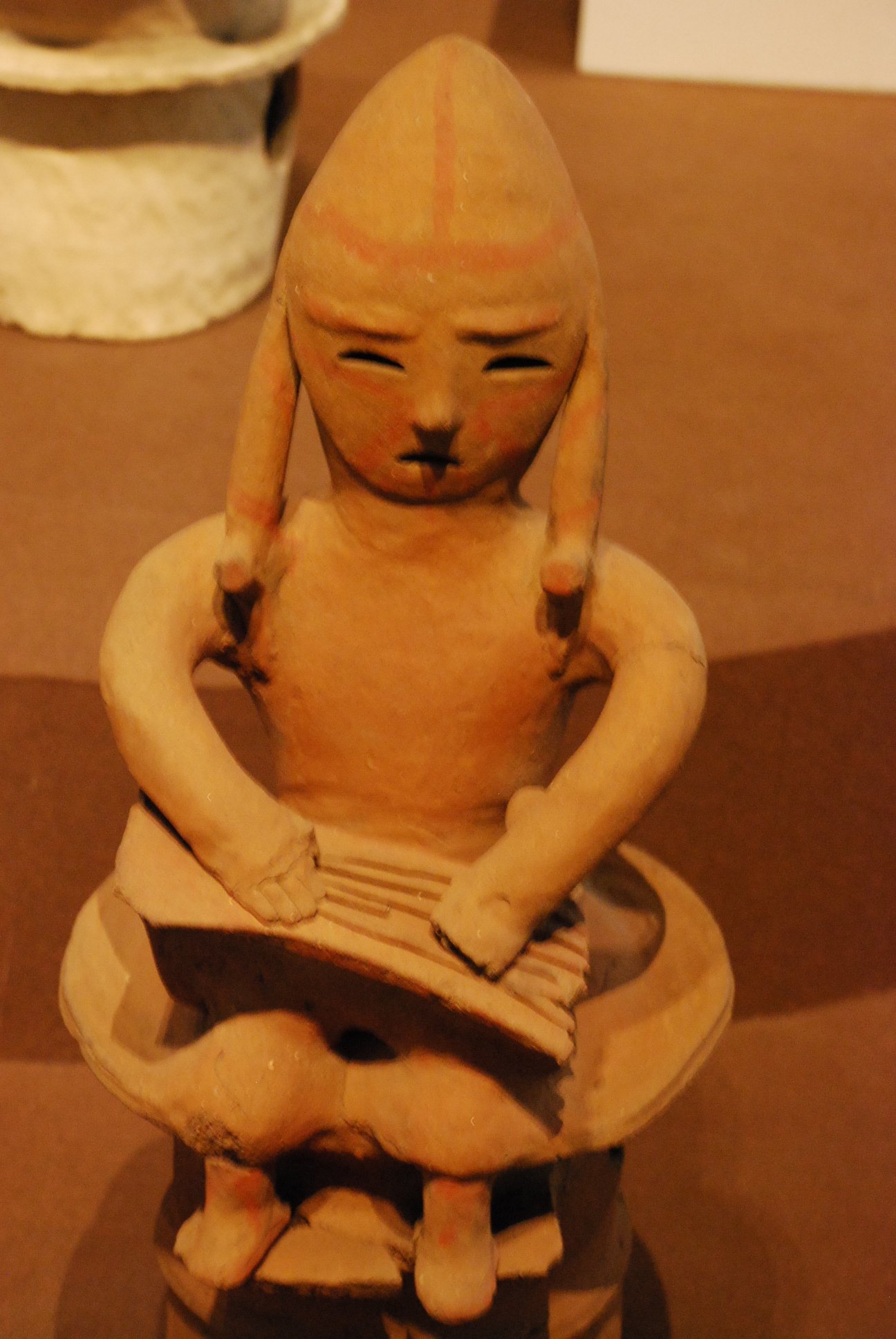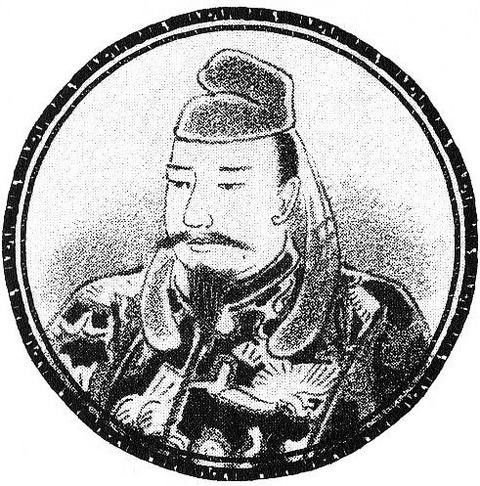Previous Episodes
- January 2025
- December 2024
- November 2024
- October 2024
- September 2024
- August 2024
- July 2024
- June 2024
- May 2024
- April 2024
- March 2024
- February 2024
- January 2024
- December 2023
- November 2023
- October 2023
- September 2023
- August 2023
- July 2023
- June 2023
- May 2023
- April 2023
- March 2023
- February 2023
- January 2023
- December 2022
- November 2022
- October 2022
- September 2022
- August 2022
- July 2022
- June 2022
- May 2022
- April 2022
- March 2022
- February 2022
- January 2022
- December 2021
- November 2021
- October 2021
- September 2021
- August 2021
- July 2021
- June 2021
- May 2021
- April 2021
- March 2021
- February 2021
- January 2021
- December 2020
- November 2020
- October 2020
- September 2020
- August 2020
- July 2020
- June 2020
- May 2020
- April 2020
- March 2020
- February 2020
- January 2020
- December 2019
- November 2019
- October 2019
- September 2019
The Five Kings of Wa
The five kings of Wa in the Song Shu are shown below, with potential sovereigns from the Chronicles. Dates for the sovereigns are the traditional dates from the Chronicles and may be as much as 120 years off, as has been discussed in previous episodes.
讃 (Embassy in 421 and 425)
Modern Japanese: SAN
Middle Chinese: /t͡sɑnH/
Later annals use 「賛」
Titles conferred: None
Potential Sovereigns: Homuda Wake (Ōjin Tennō, r. 270-310), Ōsazaki (Nintoku Tennō, r. 313-399), Izaho Wake (Richū Tennō, r. 400-405)
珍 (Two embassies, no dates—Younger Brother of SAN)
Japanese: CHIN
Middle Chinese: /ʈˠiɪn/
Later annals use 「彌」
Titles conferred: “General and Pacifier of the East”, “King of the Land of Wa”
Potential Sovereigns: Ōsazaki (Nintoku Tennō, r. 313-399), Midzuha Wake (Hanzei Tennō, r. 406-410)
濟 (Embassy in 443 and 451)
Japanese: SEI
Middle Chinese: /t͡seiH/
Later Annals use 「齊」
Titles conferred: “General and Pacifier of the East”, “King of the Land of Wa”, “Military Governor of Wa, Silla, Nimna, Kara, Jinhan, and Mahan
Potential Sovereigns: Woasatsuma Wakugo (Ingyō Tennō, r. 413-453)
興 (Embassy in 462; heir to SEI)
Japanese: KŌ
Middle Chinese: /hɨŋ/
Titles conferred: “General and Pacifier of the East”, “King of the Land of Wa”
Potential Sovereigns: Anaho (Ankō Tennō, r. 453-456), Ichinobe no Oshiwa, Ōhatsuse Wakatake (Yūryaku Tennō, r. 456-479)
武 (Embassy in 478; younger brother to KŌ)
Japanese: BU
Middle Chinese: /mɨoX/
Titles conferred: “Regional Military Governor of Wa, Silla, Nimna, Kara, Jinhan, Mahan”, “Great General and Pacifier of the East”, “King of Wa”
Potential sovereigns: Ōhatsuse Wakatake (Yūryaku Tennō, r. 456-479), Shiraga Takehiro Kunioshi Waka Yamatoneko (Seinei Tennō, r. 479-484)
Kishimoto Dual Kingship Lineage
According to Kishimoto Naofumi, he suggests the following two lineages of co-rulers. There is a Sacred and Secular lineage, and in some cases he assigns to each one different kofun than are traditional, and death dates that may be different from traditional death dates.
Subsidiary Line
?? - Sakurai-chausuyama
?? - Mesuriyama
Ōtarashi-hiko - Shibutani-mukaiyama (Keikō-ryō)
?? - Saki-misasagiyama (Hibasu Hime-ryō)
?? - Saki-Ishizukayama (Seimu-ryō)
Homuda Wake (d. 394) - Tsudōshiroyama (Tsudō sankōchi)
Izaho Wake (d. 427) - Kamiishizu-misanzai (Richū-ryō)
Midzuha Wake (d. 437) - Konda-gobyōyama (Ōjin-ryō)
Ichinobe Oshiha Wake - Ichinoyama (Ingyō-ryō)
Wakatakeru (d. 479) - Oka-misanzai (Chūai-ryō)
Main Line
Himiko - Hashihaka Kofun
Toyo - Nishitonozuka Kofun
Mimaki Iri Biko - Andon’yama (Sujin-ryō)
Ikume Iri Biko - Hōraisan (Suinin-ryō)
??? - Gosashi (Jingū-ryō)
Ōsazaki (d. 432) - Nakatsuyama (Nakatsu hime ryō)
Oasazuma (d. 454) - Daisen (Nintoku-ryō)
Kinashikaru - Haze-nisanzai (Higashi-mozu sankōchi)
Shiraga - Maenoyama (Hakuchō-ryō)
-
Episode 58
Welcome to Sengoku Daimyo’s Chronicles of Japan. My name is Joshua and this is Episode 58: The Five Kings of Wa.
Before we get started a quick shout out to Lyndon for donating to support the show over on Patreon! You can join Lyndon on Patreon or contribute via Ko-Fi—just look up SengokuDaimyo or check out our links on our podcast web page at sengokudaimyo.com/podcast. Every little bit helps us keep this thing going.
And with that, let’s move on with the show!
In the last episode we talked about the chaos that followed the death of Woasatsuma Wakugo, aka Ingyou Tennou. We talked about Prince Anaho, aka Ankou Tennou, who defeated Crown Prince Karu to take the throne, but was later killed by the son of Prince Ohokusaka, Mayuwa, who learned that Anaho had killed his father and then married his mother. Using this pretense, Ohohatsuse Wakatake went on a rampage, murdering his own brothers, as well as Mayuwa, and eventually even killing the new heir presumptive, Prince Ichininobe. Only his two sons, Oke and Woke, seem to have avoided the carnage, largely by fleeing to Harima and disguising themselves as regular servants.
All of this was happening in the mid to late 5th century, and brings us up to this episode’s topic. Up to this point we’ve been using the Chronicles, with some evidence from the Korean annals, to try to figure out just where we really are—though, admittedly, we haven’t seen much correlation with the Korean annals since the days of Homuda Wake. There are, however, a couple of more pieces of evidence that can help us situate everything.
To start with, I want to talk about a discovery made back in the late 70s. It was an iron sword, and technically it was found in 1968 in a tumulus in the Saitama prefecture. The tomb was known as Inariyama Kofun, and it was one of several tombs that are part of the Saitama Kofun group in Gyoda, some 64 kilometers northwest of Tokyo proper, at the confluence of the Kyushinobu and Shinshinobu Rivers. And though they found the sword in 1968, it wasn’t until about a decade later that they realized its true value. You see, as they started their preservation work, it became apparent that there was writing along the entire length of the long, straight iron blade. The front had 57 characters, and the back had 58, for a total of 115 characters total.
Now, as you may recall, this isn’t the first sword—or at least, sword like object—that we’ve found with some sort of writing. We previously talked about the seven branched sword that was discovered in the treasure house of Isonokami shrine in the Nara basin. That sword appears to have been commissioned on the continent by the rulers of Baekje as a gift for their allies on the archipelago. In the case of the Inariyama Kofun sword, the writing on the sword had a slightly different purpose. We are told that the inscription was written in the seventh month of the “Shikai” (or “Xinhai”) year, and it gives the name of its owner, Wowake no Omi, a distant descendant of Oho-Hiko. You might dimly recall that name , Oho-Hiko, as having been given to one of the four generals under Mimaki Iribiko back in the 3rd century—perhaps some two hundred years before the sword was created. Oho Hiko had been responsible for subduing Koshi and the eastern provinces, at least according to the Chronicles. As we mentioned before it could be a name, or just as easily be referring to some generic title, just as the sovereigns were known as Oho-Kimi. Either way, the connection between this Isonokami sword and this eastern commander seems intriguing, especially given the rest of the inscription, which goes on to describe Wowake’s own children, and makes the claim that their family were the sword bearers for the sovereigns. Quite specifically they are noted as the sword bearers—the Jintoujin no Kashira—who served the court of one “Wakatakiru Ohokimi” when he dwelt in the Shiki palace.
Now let’s break down this inscription a little more. First, we are told this inscription was written in a Xinhai year. “Xinhai”, colloquially known as the year of the Metal Boar in the system of the 10 heavenly stems and 12 earthly branches, only occurs every 60 years, much as how we just recently, in 2022, entered the year of Water Tiger. Specifically, “Xinhai” could refer to the years 291, 351, 411, 471, 531, or 591, in the western calendar. The dating of the tomb seems to place everything in the later 5th century, and so our best guess for which Xinhai year the sword mentions is our year 471.
Next, we are told that the sovereign was dwelling in the Shiki palace—in this case likely referring to the fact that he was in the Nara basin.
Finally, the name Wakatakiru no Ohokimi feels remarkably close to Wakatakeru no Ohokimi—the personal name and title of Ohohatsuse no Wakatakeru, which is sometimes transliterated as simply Wakatake.
And so it seems, through this artifact, we have actual confirmation of the name of one of the sovereigns of Yamato, and it matches up quite conveniently with the name of a sovereign said by the Chronicles to have been living in the late 5th century. This is further confirmed on another sword of this time, this one found across the archipelago on the island of Kyushu. It is known as the Eta Funayama sword, taking its name from the tomb mound in Kumamoto where it was discovered. Originally excavated in 1873, it dates to the 5th century, much like the sword found at the Inariyama tomb, and it also has an inscription, this one burned into the sword in silver characters. Unfortunately, there are plenty of places in that inscription where characters are missing or illegible. Nonetheless, there is mention of the Ohokimi, or sovereign, and the characters would appear to be consistent with those found on the Inariyama sword, naming the Great King, once again, as Wakatakiru.
The Eta Funayama sword inscription is, overall, shorter, but still has some interesting points that we may wish to take note of. First off is the fact that the sword appears to have been made by someone named “Itaka”, which appears to be a local smith of some kind, but the individual who wrote the inscription is listed with characters that seem to most likely refer to the name Zhang An—likely an individual of Han Chinese descent. So then, was an individual of Han descent living in Kyushu and helping people with their writing requests? Was this some early form of the JET program, but for sinographic writing, instead? Or did they send away for their inscription, like a mail order request, to the continent somewhere?
Personally, I think it makes the most sense that he was probably there, resident in or around the area of Kumamoto, possibly serving the local administrators there.
Besides the insight this gives us on who was actually doing the writing, it also gives us an idea of the influence of the Yamato court. While we may debate the amount of authority that it exerted, it seems clear that the Great King, or Oho-Kimi, was recognized from Kyushu to Kanto—and presumably in between. This is big for looking at how the state that we will come to know as Japan was shaping up.
Now I wanted to take a look at these archaeological finds because they really help to tie a bow on the idea that there really was a sovereign in the 5th century known as none other than Wakatakiru no Ohokimi. The only strange feature here is that the name on both swords is spelled out phonetically, with what appear to be the same characters in each case, though for the Eta Funayama sword we only have the first and last characters of the name. This isn’t entirely strange—the Kojiki often spells things out phonetically while the Nihon Shoki often opts for characters more associated with the name’s meaning than for its pronunciation. Here, however, none of the readings in the Nihon Shoki nor the Kojiki appear to use the characters found on the swords.
This could simply be due to the continuing evolution, at this time, of sinographic characters and their use in the archipelago. It is possible that centuries afterwards, different characters were now in common use. Regardless, it seems odd to me that two inscriptions, found at such a distance from one another, would match so well with each other.
And yet there is one other thing that we have to consider in all of this, and that is the account in the book of the Southern Song—sometimes known as the Liu Song—about the so-called “Kings of Wa”.
Now the Liu Song dynasty was so called to differentiate it from the later, more well-known Song dynasty of the tenth to thirteenth centuries. This Liu Song arose at the beginning of the 5th century.
The Jin dynasty had suffered numerous setbacks in the 4th century, leading to a period known to some as the period of 16 kingdoms, though the exact count is somewhat debated. The actual Jin court was pushed south and east, becoming the Eastern Jin. Meanwhile, various states arose in the northern areas of what is today the modern state of China. The Eastern Jin pushed back, with attempts to retake the north, as well as other breakaway states. There were constant struggles, and by the end of the 4th century, the Jin emperor had even fallen into the hands of a rebel, who had set himself up as regent.
There were campaigns by Jin loyalists to put down this rebellion, and one of the most successful generals of these campaigns was Liu Yu. He helped put a stop to the rebellion and then took his place as regent as he helped reconquer many of the areas that had been lost to the Jin, bringing them back and consolidating power. By 420, he had consolidated power, and he eventually deposed the emperor and took the throne as his own, thus replacing the Jin dynasty with the Liu Song dynasty.
This state of Liu Song controlled the areas of the Han heartland along the Yangtze river, but never really managed to reconquer the northern, Yellow River territories, which eventually consolidated under the northern Wei. Nonetheless, they had control of the eastern seaboard from the northern edge of modern Vietnam up through their capital near modern Shanghai, all the way to the Shandong peninsula.
Now, throughout all of this turmoil, the Wa, Baekje, Silla, and others had continued to send the occasional embassy to the Jin, even as the court’s home had moved east, and I doubt that they would have stopped just because of a change in management. After all, if it is true that Yamato’s influence was manifested largely through their dominance of trade with the continent, it was less important who was in charge than that the goods kept flowing. Besides, from the sounds of it, there was likely little change to the basic administrative features of the empire, just a new man in charge.
From reading the Chronicles, it would be easy to wonder just what contact was happening. After all, we’ve had a dearth of entries recording embassies of any kind since the reign of Ohosazaki no Mikoto. For the reigns of Izaho Wake, aka Richu Tenno, through his brothers Midzuha Wake and Oasatsuma Wakugo, aka Hanzei and Ingyou Tenno, all the way to Prince Anaho, aka Ankou Tennou, we’ve had little to no mention of the continent besides embassies from the nearby Korean peninsula—primarily Silla. And yet, the Chronicles from the Liu Song dynasty – the other side of the exchange – tell us a different story.
In those Chronicles, the Song Shu, written in 488, there is mention of some eight or more embassies sent from the various kings of Wa between the years 421 and 478. These were from a variety of sovereigns, over different reigns throughout the entirety of the Liu Song dynasty, which was founded in 420 and ended in 479, and, perhaps most importantly, they recorded the names of the sovereigns that interacted with them.
Well… kind of. You see, here’s where we run into a big of a snag. There are five kings of Wa that are noted in the Liu Song chronicles, but for the names, each ruler is given a single sinographic character. Traditionally, these monarchs are known in Japanese by the on-yomi readings of these characters, so San, Chin, Sei, Kou, and Bu. Now, I’ll probably use these terms, but just so that you’re aware, it appears as though the Middle Chinese readings were something like “Tsan”, “Tchin”, “Tsei”, “Hing”, and “Mio”, though that isn’t exactly clear. Either way, there is a question as to how these could possibly relate to any of the sovereigns mentioned in the Chronicles.
The only one that seems somewhat clear is the last one, “Bu”. That character is also read as “Take”—as in our “current” Sovereign, Wakatake, aka Yuryaku Tenno. In fact, it is the same as the character used in his name in the Nihon Shoki, though the Kojiki uses a different character, as do the sword inscriptions mentioned earlier. But given the character and the timing, it sure seems like it refers to Wakatake.
As for the others, there is significant debate on just who they were. At one end of the debate is the attempt to match them, one for one, with the successive rulers in the Chronicles that we’ve been talking about for the past few episodes. That would make San equivalent to Izaho Wake, aka Richuu Tennou, and map the remaining generations onto the sovereigns mentioned in the Chronicles up to Wakatake, aka Yuryaku Tenno. On the other side there are some scholars who eschew any connection with the Yamato dynasty whatsoever. They claim that these were actually some other group of ethnic Wa kings—possibly based in Kyushu—with no relationship to the legendary kings of the Chronicles.
To explore this some, let’s take a look at what the Song Shu has to say about these kings of Wa and their relationship to each other.
The first of these was San of Wa, offering so-called tribute to the Song Liu dynasty in 421, just a year after they had come to the throne, and about seven years after the erection of the Gwangaetto stele in 414. Much as with previous Wa rulers, I suspect that this was hardly coincidence, and they may have specifically sent a mission upon hearing that the area of the Yangtze river was under new management. We have another embassy just four years later, in 425, when San sent an ambassador, whose name might be read as Shiba Sotatsu. So we have our first king reigning from before 421 to some time around 425—I’d suggest that more likely we could say between 420 and 424, since we’ve already seen that it could take a while for an embassy to actually make the trek from Yamato to the Chinese court.
We are told that some time after this, San died—we don’t know when—and his brother, Chin, came to the throne and started sending tribute. So this claims that San and Chin were brothers. Chin didn’t just send tribute, though, he proclaimed himself the military governor for the countries of Wa, Baekje, Silla, Nimna, and even Jinhan and Mahan, as well as the King of Wa, specifically. It is interesting that they claim Jinhan and Mahan, and I have to wonder if Silla and Baekje had truly not consolidated their rule over these areas, or if, perhaps, this was an archaic way to include all of the territories of the Korean peninsula. Regardless, Chin requested that the Song court recognize his authority. Initially they seem to have refused, only granting him the titles of “General”—as opposed to “Great General”—"and Pacifier of the East” and “King of Wa”, seemingly indicating Chin’s authority merely upon the archipelago. Chin would try again later, however, and asked for titles of “Pacifier of the West”, “Vanquisher of Barbarians”, “Great-General”, and “General who supports the state” to be given to Zui of Wa and some twelve other individuals. Apparently these titles were recognized, I suspect because they did not call out specific countries and make claims of sovereignty over them.
Massimo Soumare suggests that the fact that this second request was for titles for Chin’s vassals, rather than for the sovereign himself, may have been to bolster his own position, both at home and at with the Song court. After all, if Yamato’s position relied on their ability to acquire prestige goods from the Continent, perhaps these titles and positions were similar to the mirrors of earlier times—status symbols from the continent that not only recognized their own authority, but then provided similar continental honors on those who supported the sovereign, both boosting his own position while helping to keep other local lords dependent on him for their own status. This likewise demonstrates the continental courts’ own use of titles as a prestige good of their own, which they could give out in return for goods in the form of tribute, which again boosted their own position. It was a win-win for both sides.
Now, unfortunately, we don’t get dates for Chin, and even the name of “Zui of Wa” gives us little to go off of, but we do know that in 443 there was yet another sovereign from Wa sending an embassy, so presumably Chin reigned sometime between 424 and 443.
This third sovereign was Sei, and he was also granted titles of his predecessor, being pronounced the General and Pacifier of the East and King of the Land of Wa. Eight years later, in 451, he was also appointed as the regional military governor for the countries of Wa, Silla, Nimna, Kara, Jinhan, and Mahan, as well as keeping his previous titles. In addition, 23 people were appointed as “district general”.
I would note that of the six countries listed for military governorship, “Baekje” is conspicuously absent, having been replaced by Kara, instead. The reason is unclear, but I suspect had to do with the shifting political realities at the time. Also, the fact that there were now 23 individuals being granted titles along with the sovereign would seem to indicate the growing power of Yamato in the archipelago.
Sei would die at some time after this, and was followed by Ko, who is specifically named as Sei’s heir. Ko sent tribute in 462, so we know that Sei must have ruled sometime between 451 and 462. Ko was likewise granted the titles of General and Pacifer of the East as well as King of Wa. Unlike previous reigns, however, there was no follow up mission to request titles for his subordinates. This may be because Ko died before he could follow up, though when he died is, once again, not clear from the Song Shu, which focuses merely on the dates when the embassies arrived at court.
The next ruler to come to the throne, and the final one in the Liu Song chronicles, was Bu—whom we have already identified as Wakatake no Ohokimi—and he is said to have been the younger brother to Ko. In 478, he is said to have taken for himself the title of regional military governor for the lands of Wa, Bakeje, Silla, Nimna, Kara, Jinhan, and Mahan, as well as claiming the title of Great General and Pacifier of the East and King of the Land of Wa. It sounds as if he assumed these as hereditary titles, rather than titles that would need to be validated by the Song Court. It is also interesting that he had elevated himself from General to Great General, as well as assuming control of Baekje, which does not appear to have been previously granted.
Bu’s entry is perhaps the most loquacious of all of them, and in the Song Shu’s recreation of Bu’s missive he talks about how he and his ancestors donned armor, traveled and crossed mountains and rivers, conquering the fifty-five countries of the so-called “hairy people” in the east—possibly referring to the Emishi—and then the 66 countries of the barbarians of the west—perhaps referring to groups like the Kumaso and the Hayato of Kyushu, though it is not clear. He also claims that they extended control over the “ninety-five countries” of the Northern Sea—presumably talking about their claims on the peninsula.
He then goes on to claim that Goguryeo continued to attack them, and though the Wa were on the brink of responding, Bu suddenly lost his father, Sei, as well as his older brother—presumably Ko—forcing him to stop to mourn for a time, but yet he promised to continue his father’s vision and prosecute the fight against Goguryeo.
In response to this long and moving missive, the Song court confirmed him as military governor for six of the countries—Wa, Silla, Nimna, Kara, Jinhan, and Mahan—once again leaving off Baekje, whom I suspect had their own tribute missions to the court. He was also confirmed as Great General—not just General—and pacifier of the East, and King of Wa.
Now I don’t want to get too far into the story of Wakatake, as we’ll be getting more into that later down the road, but all of this does seem to make it hard just how to look at him and the other kings in this list. But let’s try and see if we can find some evidence to link them together.
As we do that, I’d ask you to remember something we had discussed, previously, and that is the familial ties of the various sovereigns, which may have been less concrete a lineage than the Chronicles would have us believe. So brothers may or may not have been truly related, and we aren’t even always certain that one sovereign following another were necessarily related. Then there is the complexity of the dual kingship model, which is not exactly mentioned in the Song Shu, unless, in passing, names like Zui of Wa might refer to someone such as a co-ruler. I do find it interested that they are known in this fashion and not by some phonetic transcription—though this may be because their name was relayed in writing and not directly known to the Song court.
And I should quickly note that even our initial foundation, the identification of Bu as Wakatake, while generally accepted is not without its detractors. Kishimoto, writing in 2013, references Kuranishi’s work from 2003 in which she had assigned Wakatake to “Ko”, who sent the embassy in 462. This is due in part to the dates given for Wakatake in the Nihon Shoki, which have him coming to power in 457 and then dying in 479—just a year after the embassy of Bu, and, coincidentally, the same year as the fall of the Liu Song dynasty.
Kishimoto notes that Bu’s missive talks about how he has been in a period of mourning over the loss of his father and brother. If this was Wakatake, was he mourning his brother, Prince Anaho, and his father, Woasatsuma, who had presumably died around 454, some twenty years later, or was he making note of that occurrence?
On the other hand, Prince Shiraga, who would, spoiler alert, succeed his father is definitely listed in the Nihon Shoki as Wakatake’s son, not his brother, leading us to question just what aspects of the Nihon Shoki do we accept and what do we discard?
If Bu were Wakatake, and Ko were, instead, Anaho, then the brotherly relationship would be maintained between them, and that would suggest that Sei would be Woasatsuma, which could be reasonable regardless, as his dates in the Nihon Shoki, where he reigns from about 413 to 453, conveniently align him to the dates of Sei’s embassies, though if that is the case, it is possible that he actually came to power not in 413, but perhaps closer to 443, turning an incredible reign of some 40 years into a reign of only 10 years, which is still plenty of time to have an impact.
Ko as Anaho is suggested by Soumare as the character “Ko” might be a variation of the last character of Ana-ho. Likewise the character for “Sei” can be seen as a variant for a character also read as “Tsu” found in the name Woasa*TSU*ma. I have to admit that all of this seems somewhat tenuous, and yet the dates do seem rather convincing.
Now Sei, as you’ll recall, took over from Chin after he passed away. Chin is not directly noted as being related to Sei, though there does seem to be a presumed father-son relationship. It is possible that the lack of a direct connection is due to the intervening sovereigns, who perhaps were too embroiled in intra-archipelago conflicts to send missives to the mainland. Or perhaps, as seen by some, Chin and his predecessor, San, were actually part of another line, which was replaced by Sei.
Certainly the Song Shu indicates that San and Chin were brothers. The only pair that seem to fit that mold in the Chronicles are Izaho Wake and Mizuha Wake. The “Za” of Izaho could be where we get “San” and there is some suggestion that the character for “Chin” was a mistake for the character used in the Nihon Shoki for the “Mi” of “Midzuha Wake”.
On the other hand, some have suggested that the character “San” is related to the character for “Homu”, as in Homuda Wake, but that would drag Homuda Wake from a death in or around 394 and up to 425 and possibly later. Meanwhile, there are those who also suggest that Chin might indicate the “Oho” of “Ohosazaki”, Homuda Wake’s successor. And yet Ohosazaki is said to be Homuda Wake’s son, and not his brother.
In all of this, Soumare points out that it is also possible that the characters used in the names may not be related in any way to the personal names that were handed down to us in the Chronicles. Rather, they may have been given by the Song court based on characteristics that they attributed to the kings themselves. This kind of name-giving may have been yet another part of the complex system by which the court handed out their titles. If that is the case, then all of the speculation around connecting the characters in the names with specific individuals may be worthless.
On top of everything else, Kishimoto’s dual-kingship theory continues to raise its head. He also takes into account the five kings, and suggests that there is actually significant overlap in some of the reigns, at least from the time of Homuda Wake through Prince Shiraga. This could be explained if Homuda Wake, aka Oujin Tenno, did not simply raise up Uji no Waki-iratsuko as his heir, but rather made him his direct successor while making Ohosazaki the new secular ruler. In this scenario, Izaho Wake and Mizuha Wake, aka Richu and Hanzei Tennou, would have continued in the main line, while Woasatsuma might have inherited his position through Ohosazaki. According to this hypothesis, the line from Mizuha Wake actually continued to Ichinobe no Oshiwa Wake and then to Wakatakeru, aka Yuryaku, while the line of Ohosazaki, aka Nintoku, continued through Oasazuma, aka Ingyo, to Prince Kinashi Karu and then Prince Shiraga.
And that is probably a lot to take in. I’ll try to lay some of this out on the podcast website if I get the chance, but it is quite confusing. The fact that none of these entries in the Chronicles bother to talk about asking for—let alone receiving—any kind of titles from the continental courts makes it even more confusing.
Personally, I think it makes some sense that San and Chin might relate to Izaho Wake and Mizuha Wake, who definitely appear to be named similarly and to have likely come from the same line, even if they were not, as the Chronicles suggest, brothers. Sei might then, indeed, be Woasazuma, who may have been a brother or, much like Prince Ohokusaka, he may have been of a different lineage altogether that then got added in more firmly at a later date.
That leaves us with the possibility that Ko and Bu are Anaho—or possibly even Ichinobe Oshiwa-wake—and Ohohatsuse Wakatakeru, but it could also be that Ko is Wakatakeru and that Bu is actually his successor.
Does your head hurt yet?
Regardless of exactly which king represents whom in the lineage, I think we can see a few things here that we should remember—things that the Japanese Chronicles aren’t talking about, for whatever reason.
First, the Wa clearly had relatively close contact with the mainland, especially given the timing of their visits and with their request for titles. Second, that request for titles and recognition from someone outside of the Japanese archipelago and the Korean peninsula really does seem to have been important, and it may be that, at least for a while, these “virtual” titles replaced the physical bronze mirrors that had heretofore been so popular as burial goods.
Finally, we can see that the state is coming together, and that it isn’t all peace and love, but seems equally to be built on the back of armed conquest—and some of that fighting was likely still going on over on the peninsula, despite the lack of mention of it in our sources—or at least in anything prior to Wakatakeru. You might recall, listeners, how we had some similar gaps in the record around the time noted on the Gwangaetto Stele.
And so we’ll continue to move forward, but I just wanted to make sure we covered this piece of intriguing historical data—even if it may just end up leaving us with more questions than answers. I do think that we can be fairly confident from this point on that our dates are getting significantly more credible, the further we continue in our story.
And so we’ll look more into the life of Ohohatsuse Wakatake, aka Yuryaku Tenno, next episode, and we’ll see what else that tells us. At least we have some confidence that he actually existed, even if there are still some questions about how he fits into the overall historical picture.
Until then, thank you for all of your support. If you like what we are doing, tell your friends and feel free to rate us wherever you listen to podcasts. Ratings do help people find the show, and thus is one way to share it with others. If you feel the need to do more, and want to help us keep this going, we have information about how you can donate through our KoFi site, kofi.com/sengokudaimyo, or find the link over at our main website, SengokuDaimyo.com/Podcast, where we will have some more discussion on topics from this episode.
Also, feel free to Tweet at us at @SengokuPodcast, or reach out to our Sengoku Daimyo Facebook page. You can also email us at the.sengoku.daimyo@gmail.com. We would love to hear from you and your ideas.
And that’s all for now. Thank you again, and I’ll see you next episode on Sengoku Daimyo’s Chronicles of Japan.
References
Ō, Yasumaro, & Heldt, G. (2014). The Kojiki: An account of ancient matters. ISBN978-0-231-16389-7
Kishimoto, Naofumi (2013). Dual Kingship in the Kofun Period as Seen from the Keyhole Tombs. UrbanScope: e-Journal of the Urban-Culture Research Center, OCU. http://urbanscope.lit.osaka-cu.ac.jp/journal/pdf/vol004/01-kishimoto.pdf
Osawa, et al. (2008). ワカタケルの剣 「図説日本の古墳・古代遺跡―決定版 (歴史群像シリーズ)」pp 134. ISBN:978-4-05-605064-6.
Soumaré, Massimo (2007), Japan in Five Ancient Chinese Chronicles: Wo, the Land of Yamatai, and Queen Himiko. ISBN: 978-4-902075-22-9
Bentley, John. (2006). The Authenticity of Sendai Kuji Hongi: a New Examination of Texts, with a Translation and Commentary. ISBN-90-04-152253
Piggott, J. R. (1997). The emergence of Japanese kingship. Stanford, Calif: Stanford University Press.
Chamberlain, B. H. (1981). The Kojiki: Records of ancient matters. Rutland, Vt: C.E. Tuttle Co. ISBN4-8053-0794-3
Shichirō, M., & Miller, R. A. (1979). The Inariyama Tumulus Sword Inscription. Journal of Japanese Studies, 5(2), 405–438. https://doi.org/10.2307/132104
Aston, W. G. (1972). Nihongi, chronicles of Japan from the earliest times to A.D. 697. London: Allen & Unwin. ISBN0-80480984-4
Philippi, D. L. (1968). Kojiki. Princeton, N.J.: Princeton University Press. ISBN4-13-087004-1


